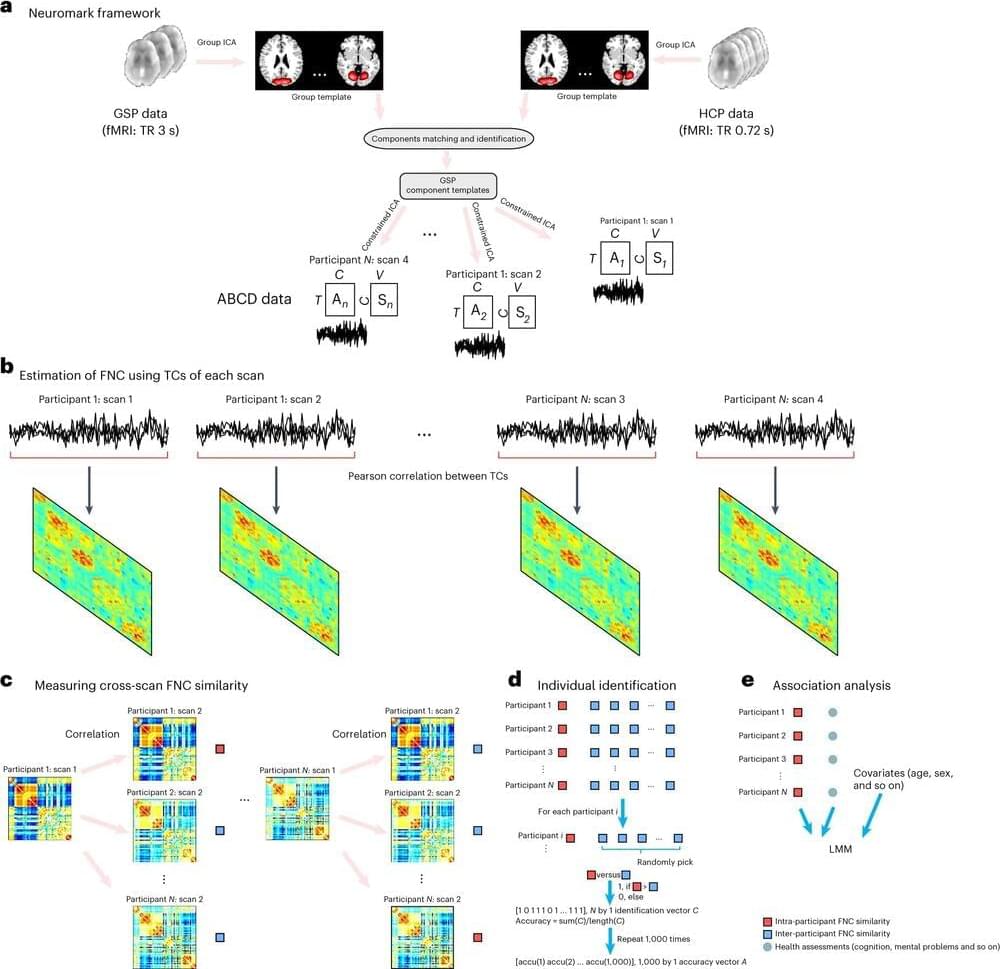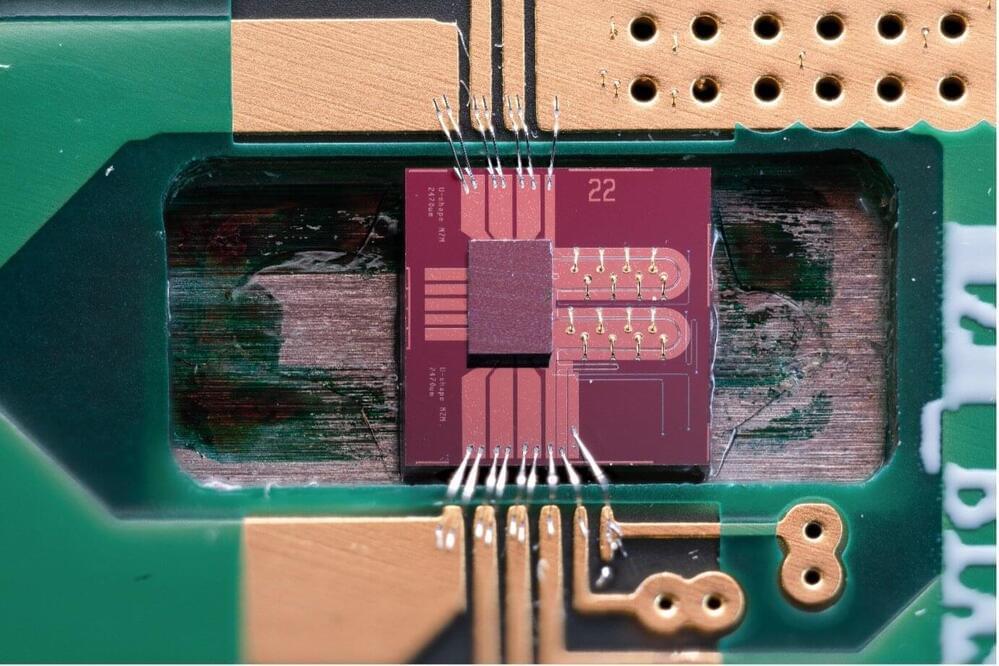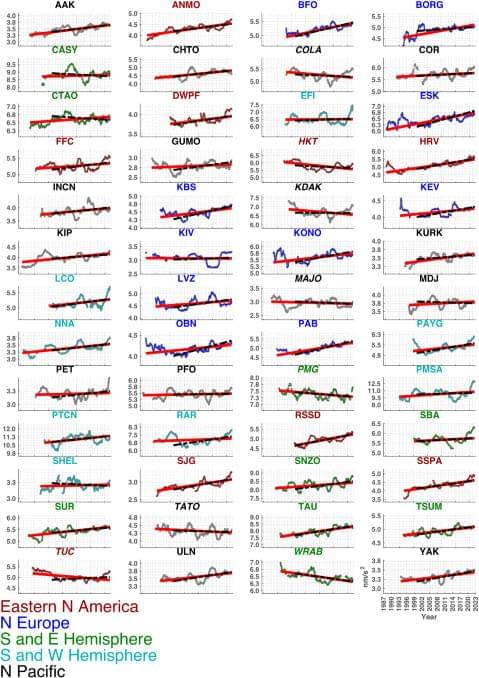Nigerian oil and gas regulator protests innocence after FBI says $50,000 in funds stolen from a wind turbine provider ended up in his account.




Researchers with the Translational Research in Neuroimaging and Data Science (TReNDs) Center at Georgia State have identified important new methods for accurately identifying possible biomarkers in adolescent brains that can reliably predict cognitive developments and psychiatric issues.
A new study, published in Nature Mental Health, represents the first large-scale analysis of its kind in which researchers analyzed functional network connectivity (FNC) across scans and identified associations with a diverse range of health measures in children. Researchers believe that inferences about early cognitive and psychiatric behaviors in children may be made using these intra-subject variabilities as a useful biomarker.
Researchers studied four scans from more than 9,000 subjects ages 9 to 11.

The widespread use of electronic devices to interact with others and access the internet has increased the need for highly performing communication technologies that can transmit data faster and more efficiently. Increasing the data transmission rate of devices without adversely impacting their energy efficiency, however, is a challenging task.
Researchers at University of Southampton in the UK recently developed a promising new transmitter based on complementary metal-oxide-semiconductor (CMOS) technology and silicon photonics. This transmitter, introduced in Nature Electronics, was found to achieve remarkable data transmission rates while consuming minimal energy.
“The integration of silicon photonics with electronics is essential for producing practical systems for numerous applications,” David J. Thomson, one of the authors of the paper, told Tech Xplore.

El Niño-Southern Oscillation (ENSO) is a climate phenomenon occurring every 2–7 years in the tropical Pacific Ocean, associated with changes in air pressure east to west.
During El Niño events equatorial trade winds blowing west weaken, causing changes in air pressure and wind speed that move warm surface water eastward from the western Pacific to coastal South America. This results in a deeper thermocline (the depth at which sea temperature rapidly changes) that prevents the normal upwelling of cooler, nutrient-rich waters, having devastating impacts on marine food chains, as well as local communities reliant upon the fishing industry.
It also brings heavier and prolonged rainfall to South America, increasing the threat of flooding, while in Australia and Indonesia there is drought, posing hazards for water supply and irrigation for agriculture. During La Niña events, all off these conditions reverse.

Researchers have developed a virtual reality application where a range of 3D modeling tools can be opened and controlled using just the movement of a user’s hand.
The researchers, from the University of Cambridge, used machine learning to develop ‘HotGestures’—analogous to the hot keys used in many desktop applications.
HotGestures give users the ability to build figures and shapes in virtual reality without ever having to interact with a menu, helping them stay focused on a task without breaking their train of thought.


Nuclear arms are the most destructive, indiscriminate and monstrous weapons ever produced – but today, we can all celebrate a major milestone in the long march towards peace: the Treaty on the Prohibition of Nuclear Weapons (TPNW) is now part of international law!
The year 2021 also marks the 50th anniversary of Greenpeace, which began life in September 1971 when a small group of activists set sail to the island of Amchitka, off the west coast of Alaska, to try and stop nuclear weapons testing from taking place. Greenpeace could not be more delighted that in the anniversary year of our founding journey, we can join the celebration to mark this historic Treaty coming into force and pay our deepest respects to advocates for this momentous achievement, led by the International Campaign to Abolish Nuclear Weapons (ICAN).
Greenpeace France interviewed Jean-Marie Collin of ICAN France about the challenges and prospects that arise from the Treaty’s entry into force.

Although essentially the United Nations are now making nuclear weapons illegal with new treaties like nuclear disarmament. Russia currently has taken another route for globalization and possibly nuclear escalation. As currently the doomsday clock seems closer to midnight which could mean the end of the world scenarios due to Russias escalation and the possibility of all out nuclear war globally and then nuclear annihilation of the planet. Even with current wars are actually seemingly always going on but this global escalation of nuclear war is a zero sum game as no one would be the winner due to radiation levels circulating the planet. I do think that the us and china are in a treaty but so far Russia is still escalating which now holds the world now ransom.
This is a summary of Policy Brief 139 which is available with full references on the Toda Peace Institute’s website.
In January 2021, a global treaty came into force outlawing the bomb. The Treaty on the Prohibition of Nuclear Weapons (TPNW or Ban Treaty) is the most significant multilateral development in nuclear arms control since the Non-Proliferation Treaty’s (NPT) entry into force in 1970. It establishes a new normative settling point on the ethics, legality and legitimacy of the bomb.
The possession of nuclear weapons by nine countries did not suddenly became illegal with the treaty’s entry into force in January 2021. However, it would be false to claim that a UN-negotiated treaty, following a UN-authorised process and conference, has no implications for the legality and legitimacy of nuclear-weapon possession and practices.
